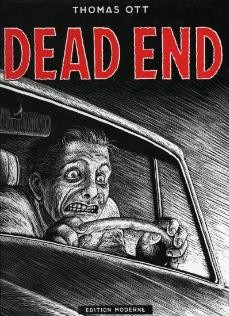Welcome to the UA! You’ll be expected to read stacks of books and articles as tall as a toddler and as dry as our desert each semester. But there’s always time for respite from academics with your other required reading: comic books.
The past decade has seen an explosion of comics from major publishers like DC, Marvel and Image, as well as from the small independents such as Drawn & Quarterly, Fantagraphics and Top Shelf.
But what’s actually good? The Arizona Summer Wildcat is here to help you with its guide to Comics You Need to Read:
“”Scott Pilgrim”” by Bryan Lee O’Malley, 5 volumes currently (Oni Press)
Imagine you’re in an awesome band and you found the girl of your dreams. Sounds like an easy life, right? Not if you’re Scott Pilgrim.
He has to deal with Ramona Flowers’s seven evil exes, each possessing a special ability, whether it’s martial arts training, psychic powers or an aptitude for creating battle bots designed to kill Pilgrim. Meanwhile, he’s still trying to figure out how to have a life outside of the band and how to handle relationships with his friends and Ramona.
Scott Pilgrim reads like The Legend of Zelda grafted onto a manga, Japanese for “”comics,”” inspired by Rumiko Takahashi (“”Inuyasha,”” “”Ranma 1/2,”” “”Maison Ikkoku””) – definitely worth checking out before the live-action movie is released next year.
“”Batman: Year One”” by Frank Miller & David Mazzucchelli
“”Batman: The Long Halloween”” by Jeph Loeb & Tim Sale (DC Comics)
So you’ve watched “”Batman Begins”” and “”The Dark Knight”” and you want to check out the comics. These two graphic novels would be the place to start.
“”Year One”” follows Bruce Wayne during his first year in Gotham City as Batman. Wayne is still growing into and adjusting to his role as the city’s self-appointed protector while Jim Gordon, a new detective from Chicago, is trying to fight a two-front war with the Mafia and the corrupt Gotham City Police Department.
Unlike his “”Sin City”” series, Miller delivers a story that isn’t choking on its tough-guy speak while Mazzucchelli renders Gotham with a noir feel, a la Alex Toth or Carol Reed’s “”The Third Man.””
“”The Long Halloween”” will be familiar. Wayne is settling into his second year as Batman, but is still prone to mistakes. Gordon has been promoted and finds an ally in the new district attorney named Harvey Dent who is eager to take on the Falcone family as well as the emerging supervillain threat. Meanwhile a mysterious murderer is haunting Gotham, striking on one holiday a month.
Despite the presence of supervillains, the creators ground the story with a darker take on the Batman mythos. Sale continues the noir approach with his artwork, unafraid to let black fill up each page. Loeb brings terse dialogue that recalls Raymond Chandler and Dashiell Hammett.
Their collaboration has resulted in a murder mystery that has left readers speculating about the true identity of the killer after more than a decade, and one of the best Batman stories ever.
Thomas Ott’s “”Dead End,”” & “”Tales of Error,”” (Fantagraphics Books)
This Swiss artist’s comics are a moody blend of irony, horror and silence. (Most of his stories have no dialogue or captions.) The stark black-and-white pages – thanks to Ott’s use of scratchboard -ÿbring to mind such German Expressionist films as Robert Wiene’s “”The Cabinet of Dr. Caligari”” and F.W. Murnau’s “”Nosferatu.”” Like those films, Ott knows how to build suspense and maintain a sense of looming dread as each story reaches its foregone and tragic ending.
“”Transmetropolitan”” by Warren Ellis & Darick Robertson, 10 volumes (Vertigo)
So you’ve considered a career in journalism after hearing about the UA’s journalism program or reading an issue of the Wildcat, and you want to be the next Bob Woodward or Helen Thomas. That’s great, but this comic is not for you. If you find a kindred spirit in Hunter S. Thompson’s work, however, keep reading.
Taking its name and some of its spirit from The Pogues’ song, Ellis and Robertson craft a vision of the future that has proven true in many ways: camera glasses, two-headed cats, monoculture and a complacent press and public under the rule of mad, power-hungry presidents. (Keep in mind that the comic was created from 1998-2004.)
At the core of the story is Spider Jerusalem, journalist extraordinaire, whose columns and his trusty assistants, Yelena and Channon, can stop police riots or destroy a presidency. He’s an outright bastard, but one whose ire and Chair Leg of Truth is aimed at those who are deserving, whether they’re politicians trying to cover up their use of half-alien prostitutes or so-called religious prophets seeking nothing more than to make a profit.
Read “”Transmetropolitan”” whenever you need a reminder of why uncovering the truth – in ourselves, in others, in our endeavors – is so important.
“”Planetes”” by Makoto Yukimura, 5 volumes (Tokyopop)
This is for anyone who is coming to the UA for astronomy or aerospace engineering or just loves space exploration. Set in the 22nd century, the manga follows a group of space garbage collectors. They collect debris and remnants from the numerous flights to and from Earth.
Despite the futuristic setting, Yukimura presents Hachimaki and his coworkers with all-too real aspirations, painful pasts and familiar flaws. The story is hampered by a major plotline that revolves around space terrorists, but this is tempered with scenes of regular conversations between friends, family and coworkers. “”Planetes”” has several themes, chief among them is the desire to explore not just unknown space but also the spaces people create within themselves and with each other. If you’ve been avoiding manga due to an allergy to enormous eyes and cutesy characters, consider reading “”Planetes.””
“”Owly”” books by Andy Runton (Top Shelf)
“”Yotsuba&!”” by Kiyohiko Azuma (ADV Manga/Yen Press)
When you’re buried nose deep in textbooks at the library, it can be easy to forget everything around you. Thankfully, comics such as these are here to serve as reminders of the simple adventures and joyous wonders in the world.
The “”Owly”” series is wordless with the occasional dialogue done through pictures in a dialogue balloon. Runton conveys the story mainly through lively and expressive characters and a fully realized world. Here, one of the biggest problems Owly faces is helping his friend fix a broken flowerpot that was going to be a present for his friend’s mom.
Yotsuba, like other green-haired five-year-olds with four pigtails, lives and experiences a vivid world that is often overlooked by adults, and follows her own rules of logic with help from her neighbors, the Ayases and her adoptive father, Mr. Koiwai.
Although aimed at a younger audience, these comics can appeal to anyone who is willing to forget their age while reading them, even if only for an hour or two before starting on the next chapter of a textbook.
Reading for Extra Credit
? “”Maus”” by Art Spiegelman
? “”Watchmen”” by Alan Moore & Dave Gibbons
? “”Jimmy Corrigan: The Smartest Kid on Earth”” or “”Quimby the Mouse”” by Chris Ware
? “”Ghost World”” or “”20th Century Eightball”” by Daniel Clowes
? “”Persepolis”” by Marjane Satrapi









